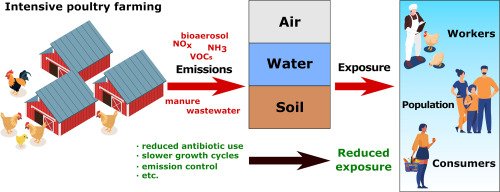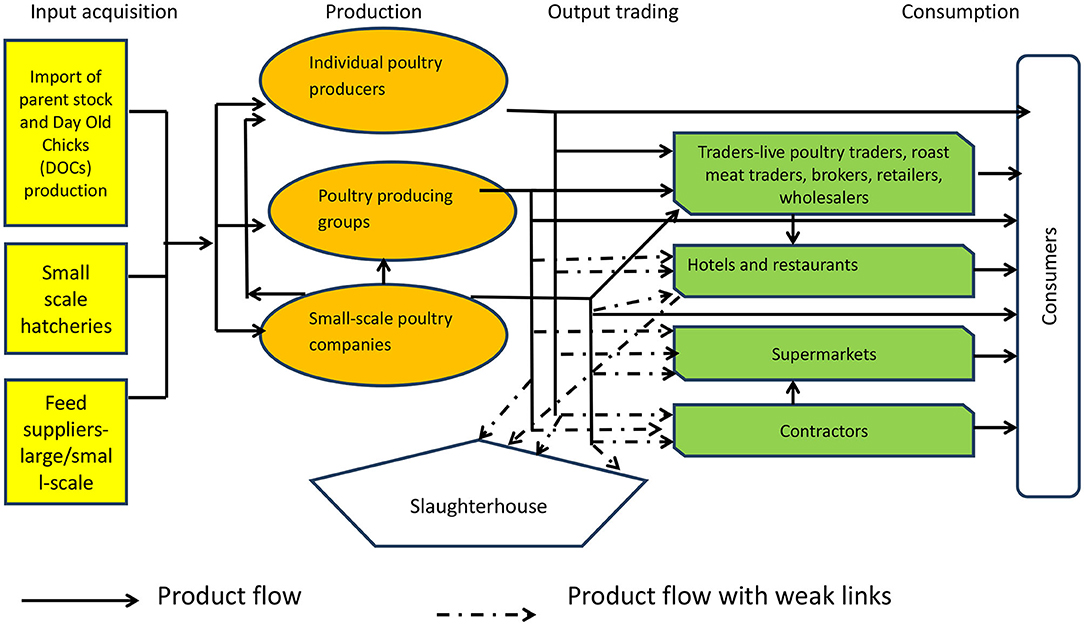
What Management Practices are Common in Dairy And Poultry Farming: Essential Strategies for Success
Management practices common in dairy and poultry farming include proper animal nutrition and health care as essential components. Effective waste management and biosecurity protocols are also crucial.
Dairy and poultry farming are vital sectors in agriculture, requiring strategic and meticulous management practices to ensure profitability and sustainability. Implementing efficient techniques for feeding, housing, and breeding animals are fundamental aspects that farmers focus on. Additionally, maintaining strict biosecurity measures to prevent diseases and ensuring proper waste disposal are key factors in successful dairy and poultry operations.
Let’s delve deeper into the common management practices employed in these industries that contribute to the overall success and well-being of the farm animals.
Contents
- 1 Challenges In Dairy And Poultry Farming
- 2 Best Practices For Dairy And Poultry Management
- 3 Technology Adoption In Dairy And Poultry Farming
- 4 Financial Management In Dairy And Poultry Farms
- 5 Market Strategies For Dairy And Poultry Products
- 6 Frequently Asked Questions On What Management Practices Are Common In Dairy And Poultry Farming
- 7 Conclusion
Challenges In Dairy And Poultry Farming
Managing health, diseases, feed, and nutrition poses significant hurdles.
Health And Disease Management: Health and disease management in dairy and poultry farming involves regular veterinary check-ups and vaccination schedules.
Feed And Nutrition Management: Feed and nutrition management must ensure a balanced diet rich in proteins, vitamins, and minerals to support optimal growth.

Credit: www.frontiersin.org
Best Practices For Dairy And Poultry Management
- Breeding And Genetics: Improving the quality of dairy and poultry products through strategic breeding and selection is crucial.
- Housing And Environmental Management: Providing well-ventilated and clean housing for animals contributes to their health and productivity.
- Record-keeping And Data Analysis: Maintaining accurate records of breeding, feeding, and health-related data aids in making informed management decisions.
Here are the brief overview:
Breeding and Genetics
– Implement strategic breeding and selection practices to enhance product quality.
– Prioritize genetic diversity in dairy and poultry farms for long-term sustainability.
Housing and Environmental Management
– Ensure clean and well-ventilated housing structures for optimal animal health.
– Proper waste management and environmental controls are critical in dairy and poultry farming.
Record-Keeping and Data Analysis
– Keep detailed records of breeding, nutrition, and health information for effective decision-making.
– Utilize data analysis tools to monitor and improve overall farm performance.
Technology Adoption In Dairy And Poultry Farming
Technology adoption in dairy and poultry farming has revolutionized the way these industries operate, leading to improved efficiency, productivity, and animal welfare. By integrating advanced management practices, farmers can now leverage automated monitoring systems, precision feeding, and health tracking to ensure optimal conditions for their livestock.
Automated Monitoring Systems
Automated monitoring systems have transformed the way farmers oversee their operations. These cutting-edge technologies allow for real-time data collection on crucial aspects such as temperature control, ventilation, and water and feed distribution. The ability to remotely monitor these factors ensures that the livestock are kept in optimal conditions, resulting in healthier and higher-quality products.
Precision Feeding And Health Tracking
Precision feeding and health tracking play a vital role in maintaining the well-being of livestock. By utilizing advanced feed management systems, farmers can tailor the nutritional intake of their animals, optimizing growth and production while minimizing waste. Additionally, integrated health tracking technology enables early detection of any potential health issues, allowing for timely intervention and preventative care.

Credit: www.mdpi.com
Financial Management In Dairy And Poultry Farms
Financial management plays a crucial role in the success of dairy and poultry farms. Efficient and effective financial management practices allow farmers to analyze costs, create budgets, manage risks, and ensure adequate insurance coverage. In this section, we will discuss two essential financial management practices commonly used in dairy and poultry farming: cost analysis and budgeting, and risk management and insurance.
Cost Analysis And Budgeting
Cost analysis and budgeting are important aspects of financial management in dairy and poultry farms. It involves analyzing the various expenses incurred in the operation of the farm and budgeting to ensure that there is a proper allocation of resources.
- Cost analysis: Conducting a thorough cost analysis helps farmers identify the essential elements of the operation, such as labor, feed, equipment, and maintenance costs. By analyzing these costs, farmers can identify areas where cost-saving measures can be implemented.
- Budgeting: Creating a budget allows farmers to plan and allocate resources effectively. It helps in estimating income and expenses, ensuring that there is enough financial provision for necessary equipment, maintenance, and other operational costs.
Risk Management And Insurance
Risk management and insurance are crucial in mitigating potential losses and protecting the financial stability of dairy and poultry farms. By implementing effective risk management strategies and obtaining appropriate insurance coverage, farmers can minimize the impact of unforeseen events and protect their investments.
- Risk management: Identifying potential risks in dairy and poultry farming operations, such as disease outbreaks, market fluctuations, natural disasters, and equipment failure, allows farmers to proactively implement strategies to mitigate these risks. This may include implementing biosecurity measures, diversifying product offerings, and developing contingency plans.
- Insurance: Obtaining comprehensive insurance coverage ensures that farmers have financial protection in the event of losses or damages due to unforeseen circumstances. This includes insuring livestock, buildings, equipment, and crops, as well as liability coverage in case of accidents or lawsuits.
Market Strategies For Dairy And Poultry Products
Dairy and poultry farming commonly include strategic management practices to ensure optimal growth and production. This involves efficient feed management, disease control, and proper animal welfare practices. Routine health check-ups, vaccinations, and clean and hygienic living conditions are also essential for maintaining herd and flock health.
Product Diversification
Dairy and poultry farming businesses employ various management practices to stay competitive in the market. One essential market strategy is product diversification. This involves expanding the range of dairy and poultry products offered to meet the diverse needs and preferences of consumers in the market. Product diversification allows dairy and poultry farms to cater to a wider customer base and tap into new market segments.
For example, a dairy farm could diversify its product range by offering different types of milk such as whole milk, skim milk, and flavored milk. Similarly, a poultry farm could diversify its offerings by providing various cuts of chicken, eggs, and value-added products like chicken nuggets or pre-marinated chicken breasts.
By offering a diverse range of products, dairy and poultry farms can attract and retain more customers, increase sales, and optimize revenue generation. Moreover, product diversification also helps farms mitigate risks associated with changes in market demand or fluctuations in prices for specific products.
Brand Development And Marketing
Another significant market strategy for dairy and poultry farming is brand development and marketing. Building a strong brand is crucial for establishing a distinctive identity in the market and creating a loyal customer base. Effective marketing plays a pivotal role in promoting dairy and poultry products, increasing brand visibility, and ultimately boosting sales.
To develop a strong brand, farms need to focus on creating a unique value proposition that sets them apart from competitors. This can be achieved through various means, such as showcasing the farm’s sustainable farming practices, highlighting the quality and freshness of products, or emphasizing superior animal welfare standards. Once the brand identity is established, farms need to implement targeted marketing strategies to reach their target audience.
This includes utilizing various marketing channels like social media platforms, online advertising, traditional print media, and collaborating with local retailers or restaurants. Marketing efforts should aim to communicate the farm’s brand values, product attributes, and any unique selling points effectively. By doing so, dairy and poultry farms can build brand awareness, generate consumer trust, and drive demand for their products in the saturated market.

Credit: www.alltech.com
Frequently Asked Questions On What Management Practices Are Common In Dairy And Poultry Farming
What Are Some Common Management Practices In Dairy Farming?
Dairy farmers often practice proper nutrition, regular health check-ups, clean housing, and waste management. These practices ensure high milk production, healthy cows, and a safe environment, resulting in a successful dairy farm.
How Can Farmers Practice Effective Poultry Management?
Poultry farmers implement practices like regular vaccinations, proper nutrition, clean and well-ventilated housing, and disease prevention measures. These management practices ensure optimal growth, high egg production, and overall health of the poultry flock.
What Is The Importance Of Record Keeping In Dairy And Poultry Farming?
Record keeping helps farmers track the health, growth, productivity, and profitability of their dairy or poultry farm. It enables them to make informed decisions, identify patterns, and ensure optimal management practices for better results and long-term success.
Conclusion
Effective management practices are essential for both dairy and poultry farming to ensure the health and productivity of the animals. By implementing proper nutrition, disease control, and housing facilities, farmers can optimize their operations. Additionally, efficient waste management and sustainability efforts play a crucial role in reducing environmental impact.
Overall, a well-managed farm leads to better animal welfare and higher-quality products.



